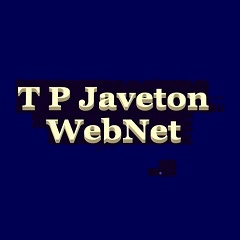The references catchall phrase
When the subject pertains to references on your resume, you would not be surprised to know that the most frequently used phrase is that old reliable standard: “References available upon request.” But whether or not this catchall phrase will continue be the acceptable stand-in for an actual list of references on your resume remains to be seen. In fact there is an ongoing debate among professionals about the inclusion of references on a resume, while some individuals still strongly encourage job applicants to include the aforementioned phrase at the bottom of their resumes.
In a way the catchall phrase lets potential employers know that, if asked, the job applicant can name at least a couple of people who think s/he is a great asset to any company. However, the opposing side will argue the validity of this line as it doesn’t provide any information with a call to action; and therefore suggests that potential employers and other job search professionals should operate under the assumption that every professional with a resume will be able to provide references from his previous employers.
Yet another group of professionals will urge you, the job applicant, to not only include the “references available upon request” phrase in your resume references section, but to list anywhere from three to five references, along with their titles, contact numbers and a description of your relationship to them, along with a notation that “more references will be provided if needed.” So, how do you know who to listen to?
A prudent use of references
In answer to the above question, a good rule of thumb will be to mention references regardless of any other phrase or statement being employed, as it is considered proper resume etiquette to include a section for references at the bottom of your resume. This lets your potential employer know that you not only have professional references, but you understand that checking references is an important part of your interview process. Additionally, you will want to have an employer request references from you so that you can let your references know they can expect to be contacted.
Finally Revealed: Great Resumes, Cover Letters and Interviews!
Listing someone as a reference on your resume without letting that person know, even if s/he has previously provided a reference for you, is not a good practice; because since you don’t want any job you of your reference list to be caught by surprise when they are contacted, it is important that you let each of them know about the job you’re applying for, and any special circumstances – if any – under which you’ve made application so that they know which qualifications they should highlight when they are contacted.
If you are posting your resume on job search web sites such as monster.com, or you’re working with a head hunter to find the best opportunities for you, it is best that you simply use the line, “References available upon request” at the end of your well-written resume; and as indicated above, you will want to let your references know ahead of time if they will be contacted by a potential employer or other entity associated with your application.
Resume blast vs targeted position
Listing references on your resume and making it available to multiple employers for review may result in calls to your references by employers you may not have even been in touch with directly. Obviously, you’ll want to avoid this kind of annoyance to people you are using as references, since you don’t want to abuse your relationship with them. If you intend to “blast” your resume to multiple employers, head hunters and other such parties, it may be prudent not to include a full listing of references on your resume.
However, if you’re sending the resume to a specific employer after you have been in touch with the hiring manager or someone at the company that will refer you for the job you are interested in, it is suggested that you include references on the resume. This allows your potential employer to have all the information necessary to consider you as a serious candidate for the job. The reference list should include the reference’s name, his/her title and the company s/he’s working for, the person’s relationship to you and a day-time telephone number.
In fact, the best practice might be to let your references know about a particular job opportunity before you submit the resume, while letting them know that you are passing along their contact information to the potential employer, or better yet, request their permission to do so. And if you have already submitted a resume without references, but expect to meet with the employer for an interview, bring a printed copy of the well-written resume you prepared and make sure it includes a list of references.
One stop shop to a good job
Following a good interview, employers typically check references as a best practice, so you will want to provide the hiring manager with a one-stop-shop (so to speak) of your qualifications and your references, therefore you should always bring a printed copy of your cover letter, your resume and references with you to an interview. Vigilance is sure to make a great impression and bring you one step closer to getting that sought after job you really want. Learn more about resumes, cover letters and interviews!
Digital & Electronic Products – Unbeatable in Quality and Price!


